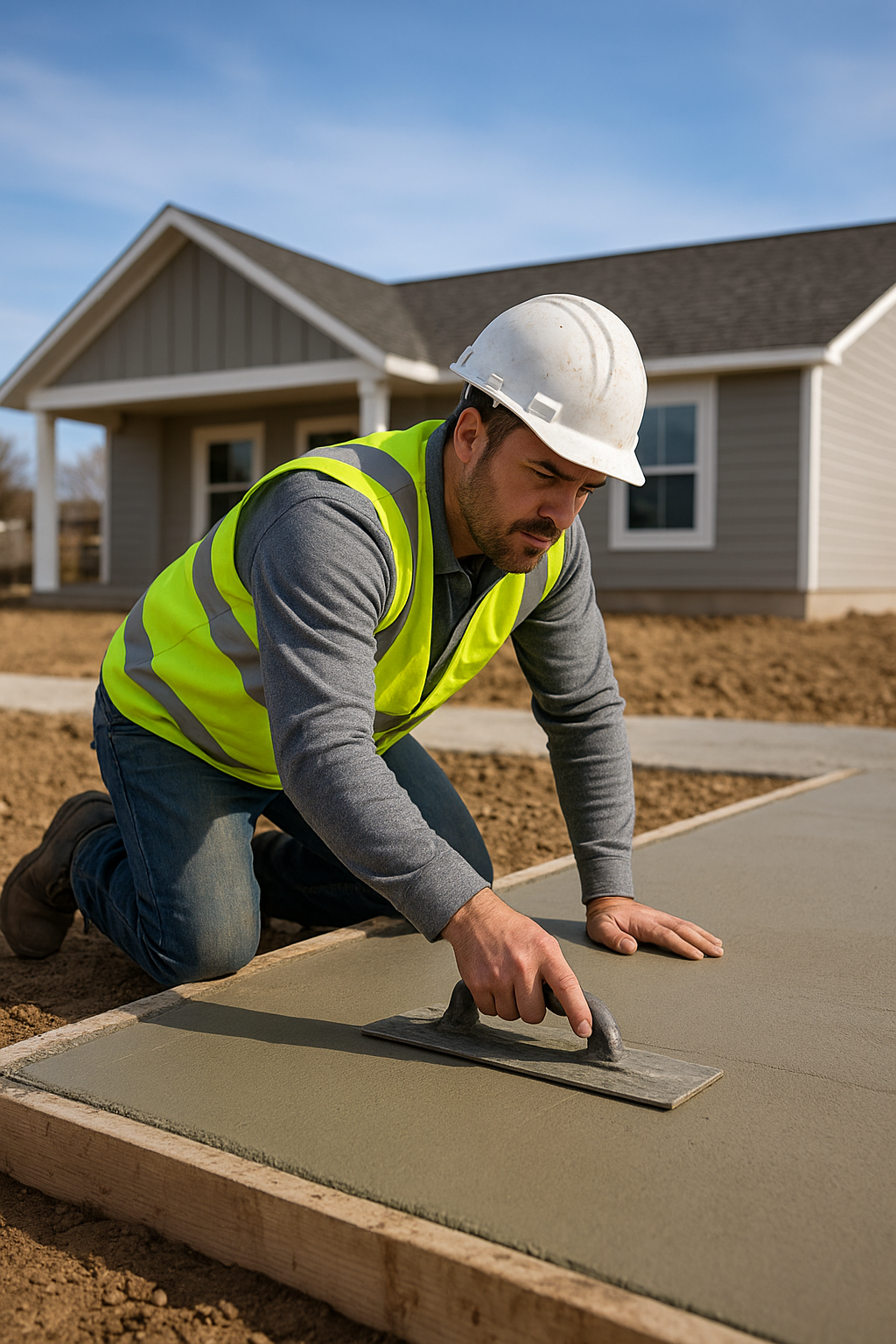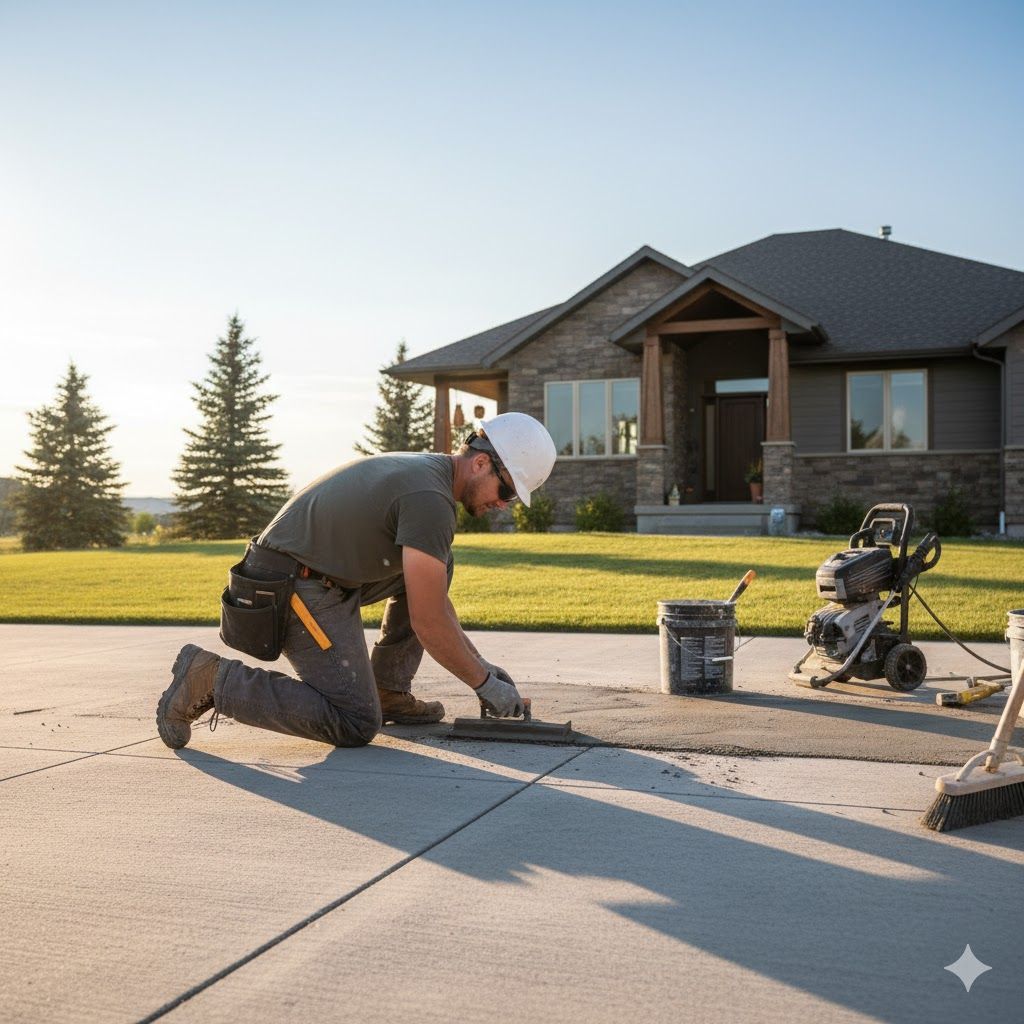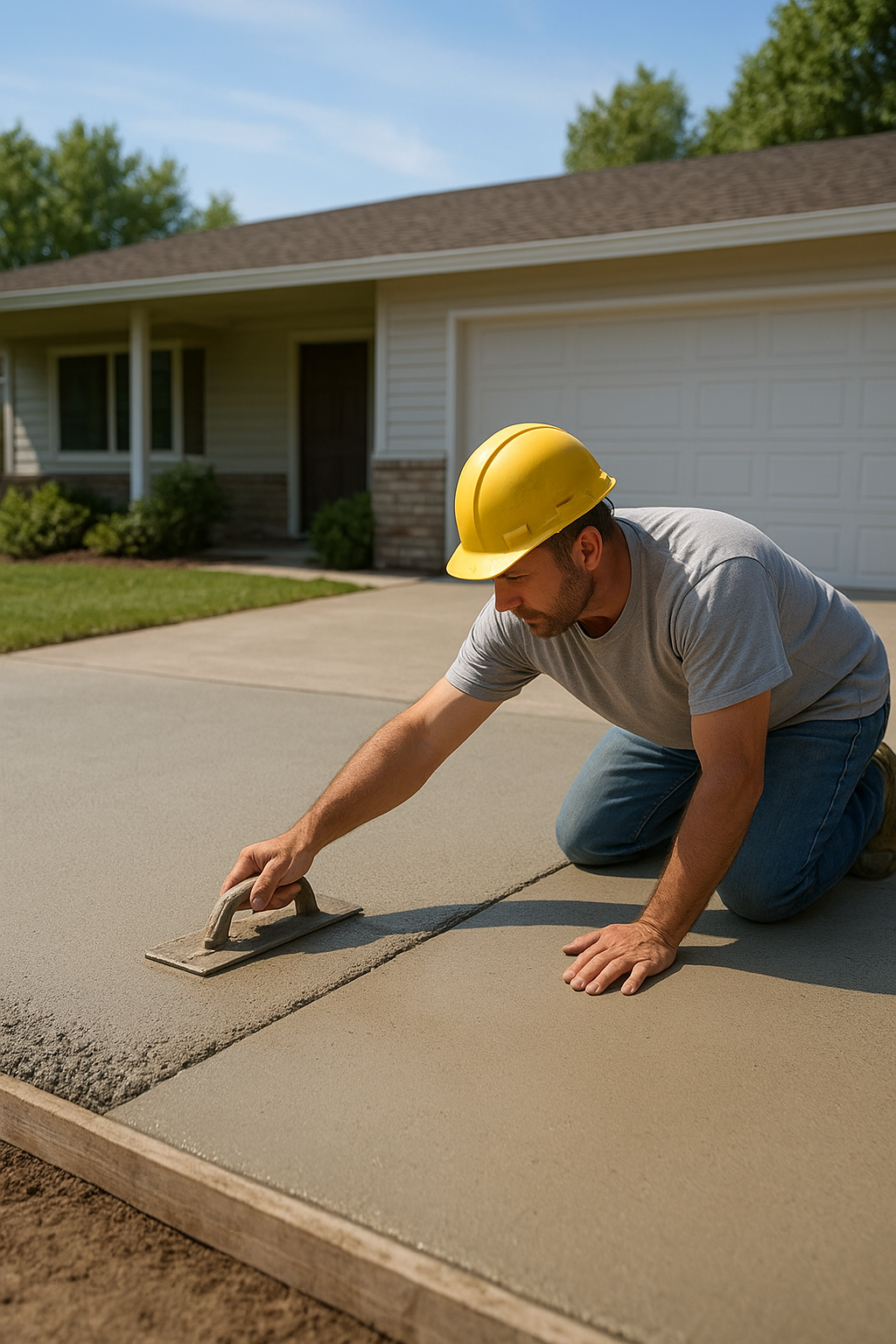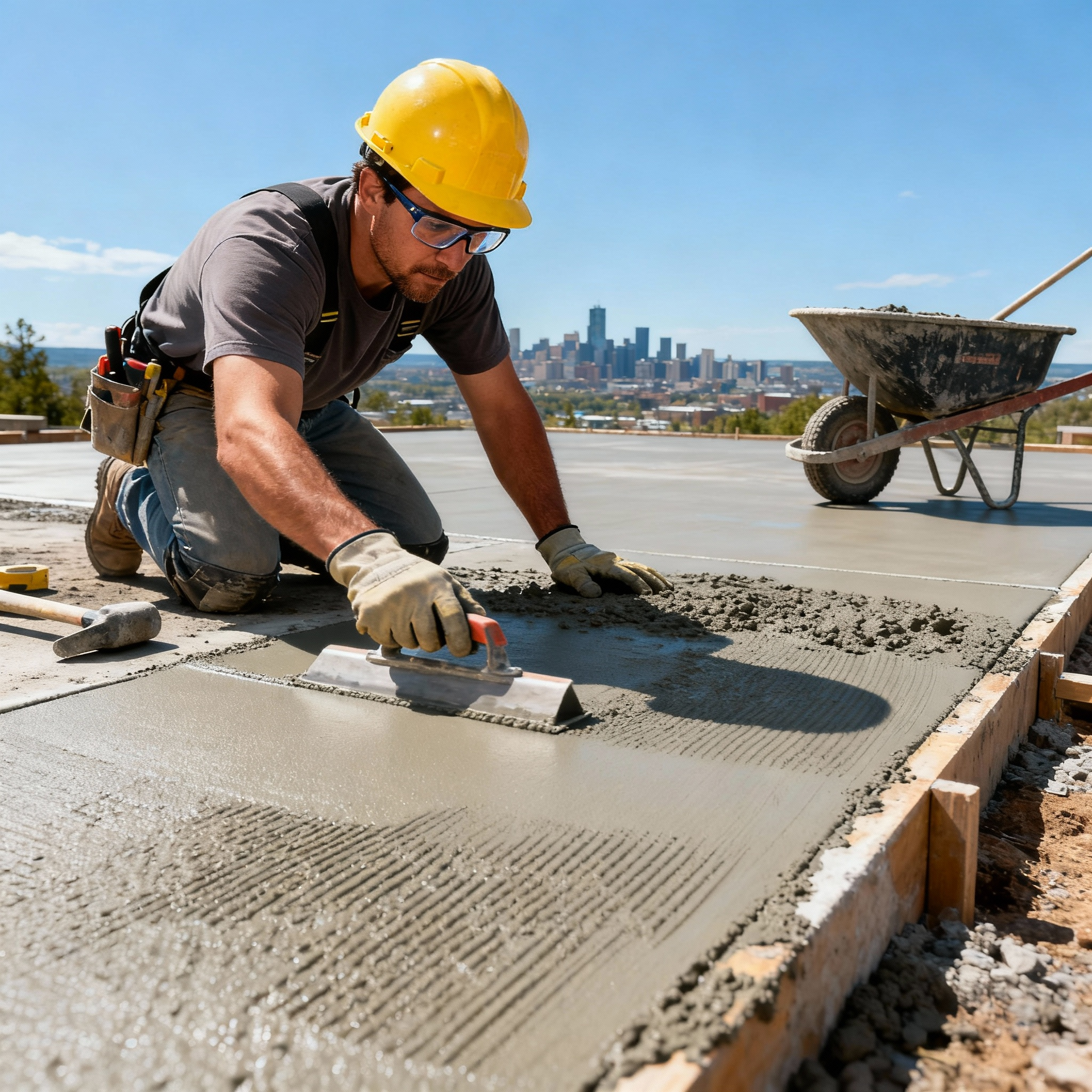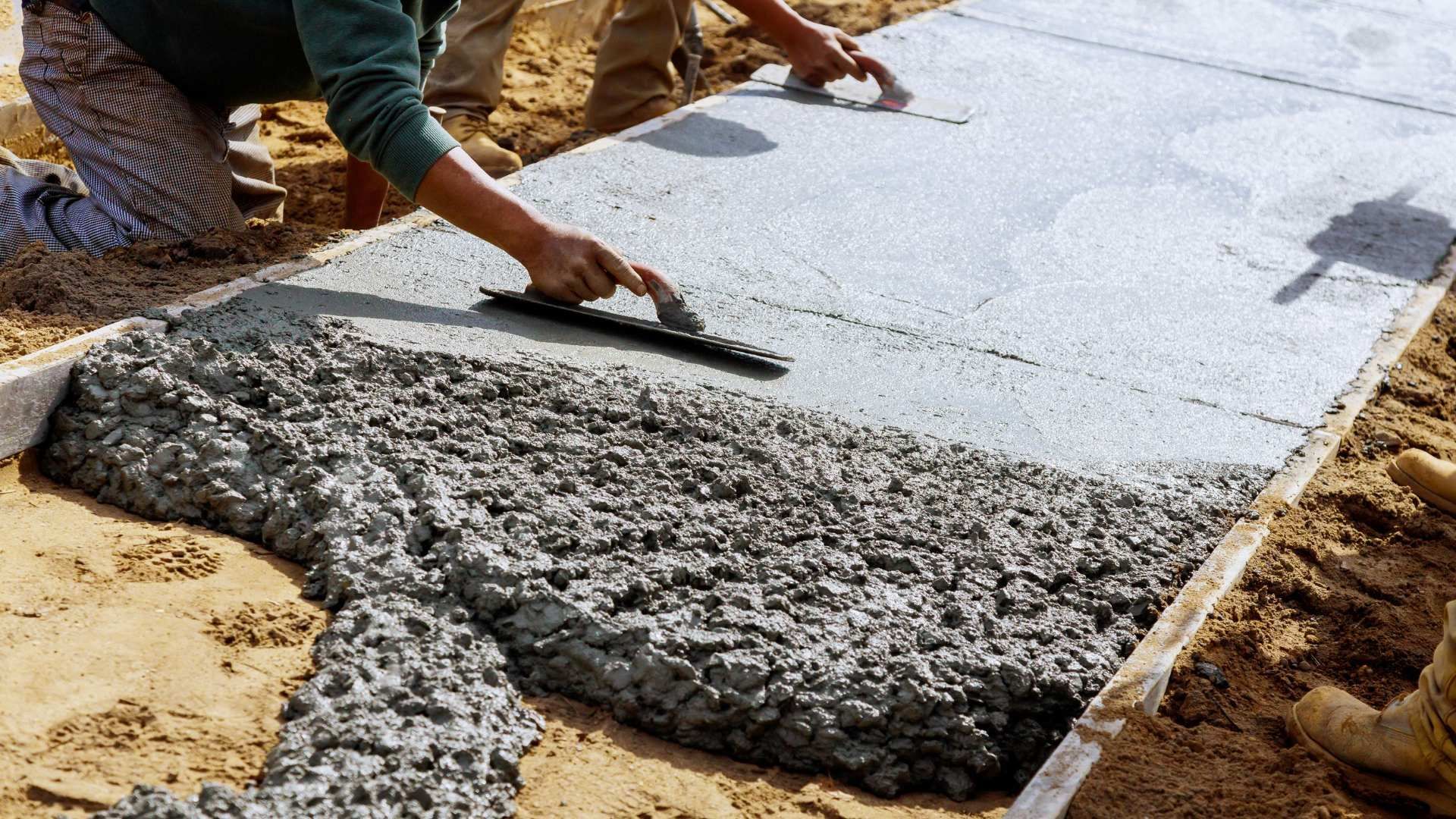The Secret to a Crack-Free Concrete Driveway
If you’re a homeowner aiming to install a durable
concrete driveway that remains crack-free for years to come, you’re in the right place. A driveway isn’t just a surface you drive over—it’s a visible part of your home’s value, curb appeal, and structural integrity. In this guide, we’ll walk you through the key secrets to achieving a crack-free concrete driveway—from proper preparation to maintenance, actionable steps, and common pitfalls to avoid.
1. Why a Crack-Free Concrete Driveway Matters
A driveway filled with cracks doesn’t just look bad—it can signal deeper structural issues, reduce your home’s value, and lead to costly repairs. According to Angi, the average cost to repair a concrete driveway ranges between
$828 and $2,825, with many homeowners spending around $1,800. Ang
When you install a high-quality, crack-resistant concrete driveway from the start, you save money, improve durability, and boost your home’s appeal.
2. Secrets to a Crack-Free Concrete Driveway
a) Base Preparation & Soil Stability
One of the biggest factors in preventing cracking is what’s beneath the slab. A stable, well-prepared sub-base prevents uneven settling and movement. Even if you pour top‐quality concrete, if the base shifts, cracks will follow. As one homeowner put it:
“We drive our cars on it, you can hear the concrete shifting under the tires.” Reddit
b) Control Joints and Proper Reinforcement
Even the best concrete will shrink and expand. Properly placed control joints guide where cracking may occur, turning potential random cracks into predictable, manageable ones. For example, Richfield Concrete recommends control joints no more than 8 feet apart to help manage shrinkage cracks.
Richfield Concrete
Reinforcement—like rebar or wire mesh—also improves toughness and helps distribute loads.
c) Quality Concrete Mix & Curing
Using the correct concrete mix for your region, climate, and use-case is critical. Too much water, poor mix design, or inadequate curing makes the slab weak and prone to cracking. Even if the slab looks fine initially, issues may show up later. According to the National Association of Home Builders, many cracks are cosmetic, but poor workmanship or base issues turn them into structural problems. National Association of Home Builders
d) Proper Drainage & Environmental Considerations
Water around or under your driveway can be disastrous. Moisture enters cracks, freezes, and expands—this freeze-thaw cycle is a real threat. One inspection firm notes that driveway cracks “can sometimes indicate larger issues, such as foundation settlement or water drainage problems.” LunsPro Carolina
Ensuring the driveway slopes away from the house, and ensuring water isn’t pooling under or beside it, goes a long way toward preventing cracks.
3. Step-by-Step Guide: Installing a Crack-Resistant Driveway
Step 1: Remove old driveway or surface if necessary and excavate to a suitable depth.
Step 2: Prepare a compacted gravel or aggregate base to specified thickness and slope.
Step 3: Install forms, reinforcement (mesh or rebar) as required for load.
Step 4: Pour concrete with correct mix (e.g., appropriate PSI, additives for region).
Step 5: Use control joints at appropriate intervals, finish the surface (broom finish, stamped if preferred).
Step 6: Cure the slab properly—keep moist and protected from rapid drying, for at least several days.
Step 7: Seal the surface after initial curing, maintain it every few years by sealing and checking for cracks early.
By following these steps—and making sure each phase is done correctly—you give your driveway a strong chance of staying crack-free long term.
4. Maintenance & Long-Term Care
Once your driveway is installed, ongoing care ensures it remains crack-free:
- Inspect annually for any small cracks and fill immediately.
- Apply a driveway sealer every 2-3 years to protect against water, de-icers, and stains.
- Keep drainage clear so water doesn’t undermine the base.
Avoid heavy loads if your slab isn’t reinforced for heavy commercial vehicles.
As the foundation and soil change over years, proper maintenance prevents small issues from turning into big problems
“A well-poured concrete driveway is not just a path for cars—it’s the firm base our home deserves."
FAQ Section
Q1: Can a concrete driveway ever be 100% crack-free?
A: Realistically, no. Even well-installed concrete may develop minor hairline cracks due to shrinkage or temperature changes. The goal is to prevent significant structural cracks that affect performance.
Q2: What size cracks should I worry about?
A: Small hairline cracks (¼” or less) are often cosmetic. But cracks that widen, shift, or show signs of movement may indicate structural issues and need professional evaluation. U.S. General Services Administration
Q3: How thick should a concrete driveway be?
A: Standard residential driveways often use a 4″ slab, but if heavy vehicles or commercial traffic are expected, 5″ to 6″ or thicker with proper reinforcement may be needed. Home Improvement Stack Exchange
Q4: How much does it cost to install a crack-resistant concrete driveway?
A: Costs vary widely depending on size, finish, region, and load requirements. As a reference, repair costs for cracked driveways average around $1,800 nationally. Angi
Q5: Can I install it myself to save money?
A: While some homeowners manage small concrete projects, a full driveway—especially one aiming to be crack-resistant—benefits from professional experience, correct equipment, and controlled conditions.
A quality driveway is more than just a slab—it’s a statement of durable craftsmanship and smart home investment. If you follow the secrets of proper base preparation, reinforcement, appropriate mix, good drainage, and proactive maintenance, you’ll give your home a concrete driveway that stays crack-free for years.
👉
Ready to get started? Contact Precision Paving Helena today to schedule your driveway consultation. Explore their full services and choose the concrete installation partner that will help you build a lasting, crack-free driveway.
